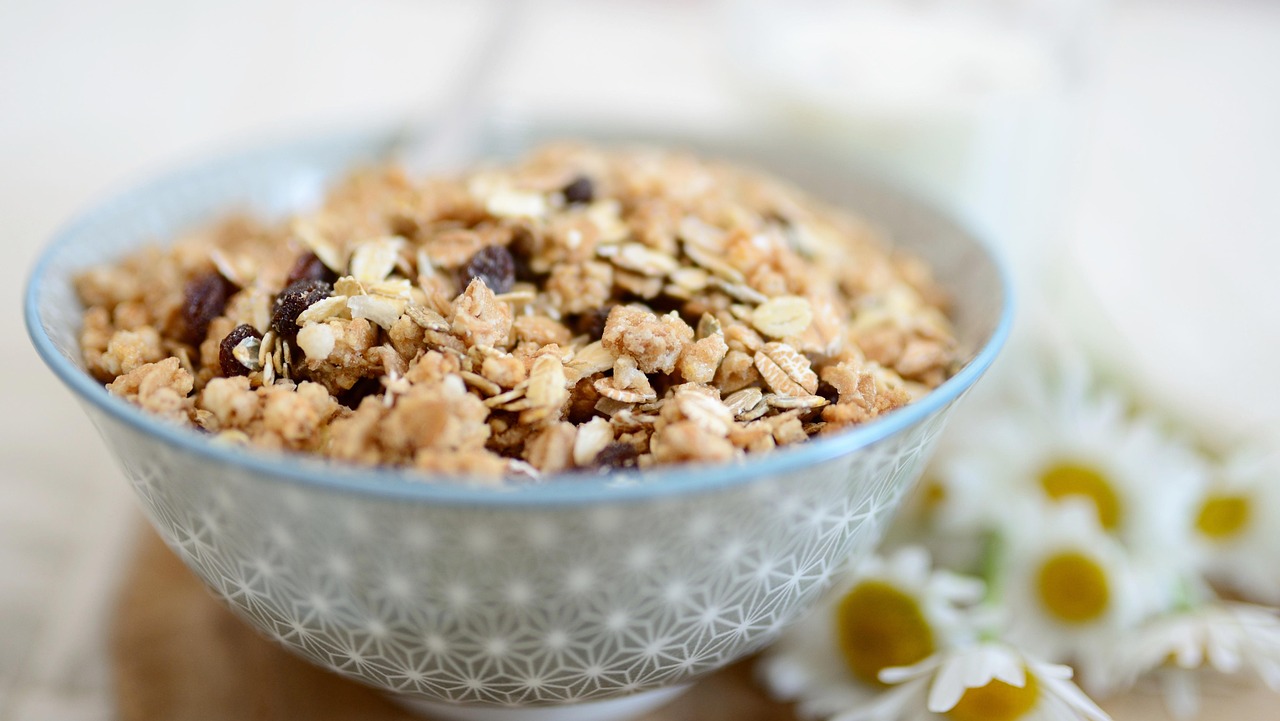Without the grains grown on American farms, the grocery store cereal shelves would be empty (as would other shelves). Consumers and business owners alike need farmers to produce the raw ingredients to fill factories, trucks, and stores, and to provide jobs along the way (graphic designers for packaging, engineers in processing, food scientists, etc.). In fact, the person who designs the box for Tony the Tiger’s Frosted Flakes® owes their livelihood to the fact that someone grows corn. About one out of every eleven Americans (or 9%) rely on agriculture for employment. It’s hard to imagine an empty cereal aisle at your favorite grocery store, and it’s easy to forget that all of the cereals came from a farmer’s field.
The grains that occupy the top of the ingredients lists on our cereal boxes are the seeds of grasses, and they have been an important part of the human diet for thousands of years. Around the world, early agriculture included the domestication and cultivation of grasses for the grains they produce. Wheat was domesticated in the Fertile Crescent of the Middle East, rice in the river valleys of ancient China, and corn in what is today central Mexico. Early agriculturalists in the Andes Mountains of South America did not domesticate grass for grain, but rather a broadleaf plant called quinoa (keen wah), which is more closely related to beets and spinach than to grasses. Quinoa produces seeds that can be cooked and eaten like grains, and is often grouped as a pseudocereal. Today, quinoa and other pseudocereals are growing in popularity due to their high nutrient content, their ability to grow in conditions not suited to true cereals, and rising demand for wheat-free grain alternatives. Quinoa even cooks up into a tasty, hot breakfast cereal.
Although they are all annual grains, wheat, corn, and rice require different growing conditions to produce a bountiful crop. Rice requires a consistently warm growing season and constantly moist soil. Rice fields are often flooded to prevent weed competition. Corn also grows best in areas that have hot summers, although it can tolerate much lower temperatures than rice. Corn needs fertile soils and regular rain or irrigation throughout the season. In contrast, wheat is a cool season crop that requires less water than rice or corn. Wheat grows during the cool, moist spring and matures best during a warm, dry summer. Quinoa is uniquely suited to growing at high altitudes and can tolerate poor soils. High summer temperatures will reduce yields. Over time, plant breeders working together with farmers and agronomists have vastly improved the productivity of these grains and the range of growing conditions in which they can thrive. Less work has been done to improve pseudocereals like quinoa, making this an area with great potential for future plant breeders and farmers as well as for engineers, food scientists, and others to develop methods for processing, utilizing, and marketing these new crops.
Most grains are harvested mechanically with a combine after the plants have begun to dry in the field. It is important for grains to be kept dry during harvest to prevent sprouting. Grains grown on a commercial scale are then sent to a mill where they will be cleaned, ground, and further processed to produce a wide variety of products. All whole grains contain three basic parts: endosperm, germ, and bran. When grains are milled, these parts are often separated. Whole grain products contain all three of these components in their original proportions. White flour and white rice have had the germ and bran removed, which contain the majority of the vitamins, minerals, and antioxidants found in the grain. These refined grains tend to store longer and have a sweeter taste. They are often enriched to return some of the nutritional content that is lost in the refining process. Corn is the most processed grain. Corn-derived ingredients can be found in thousands of products ranging from snack foods to plastics. Many people are employed in the processing, quality control, distribution, and sales of grains.
Just as grains were foundational in the of advent agriculture thousands of years ago, they continue to play a central role in agriculture and food security today. Corn, rice, and wheat provide more than half of the calories consumed by people worldwide. The science of cereal science is serious business! Students interested in a career in cereal science are required to study basic science education: biology, mathematics, and physics. Further study in chemistry, food processing, engineering, microbiology, nutrition, milling, or plant science offers students a wide range of opportunities for careers in cereal processing, food science, foods and nutrition, organic chemistry, biochemistry, or agriculture. Education in the aforementioned field of cereal science may include two-year technical degrees, four-year bachelor of science degrees, or postgraduate degrees.
